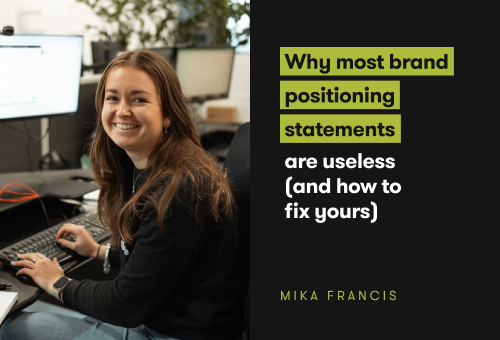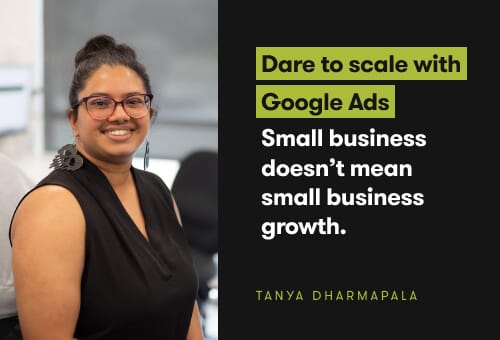Understanding the Importance of Typography in Online Marketing
A Brief Introduction to Typography
1. What is Typography?
Typography is the art of making and the arrangement of text, with the word originating from the 15th Century movable type on printing presses. Although it may seem strange to some, there is a lot of effort that goes into typography, and it can speak volumes about your business. When a visitor sees a page of text for the first time, they perceive it as a whole document. Their initial perceptions will depend on how the information is presented, affected by factors such as the letter size, how the text looks, how long the sentences are, and how dense the text is. Using these factors as cues, the visitor may make a snap judgement on your ability to solve their problem before they’ve read a single word. This is why top companies pay large amounts of money to have unique typefaces designed that compliment their documentation and promote their brand. In this three-part series by the team here at Dilate, we will take a closer look at how using typography can help your business.
Understanding Typography Terminology
Like any design process, typography has a unique language to explain its various elements. Understanding this terminology will help you to communicate your needs to a designer, or gain a more detailed knowledge of the subject. ‘Typeface’ refers to a collection of letters, numbers and characters that have the same design, such as Times, Arial or Calibri. A ‘font’ is a style within the Typeface, for example 12 point Times New Roman. The ‘line length’ is calculated as the distance that the text occupies on one line between the margins, while the term ‘kerning’ means the white spaces which occur between characters and letters. ‘Baselines’ are the lines that the letters sit on. If you hear the term ‘leading’ it’s referring to the space between the baselines, and is expressed in a numerical form as points. Finally, ‘tracking’ is the letter spacing, which affects the character density on the page.
Why is Typography So Vital to Your Business?
Everyone knows the importance of first impressions, so where does your typeface come in to it? The most obvious consideration is that reading the text should be smooth and painless. Many people will be put off if the typeface looks too small and the words are crushed together, and even if a visitor does stick around to the end of your message, they may struggle to remember it soon after as the experience was so exhausting. Well-executed typography will assist the reader in absorbing the copy, and help them to focus on the content. Humans have a particular pattern when reading web copy; typography can help to establish rules by making important sections stand out via methods such as text colour, size and bullet points. A famous study of the way humans perceive and organise information is known as Gestalt’s Principles of Perception. The theory states that people organise visual information into groups based on five principles, these are: Similarity, Continuation, Closure, Proximity, and Figure and Ground. As a basic example: you could apply this theory and decide to use Similarity to make the page look uniform, apart from a call to action, in order to make it pop out on the page. It is possible to get very adept at applying this theory to achieve better results, but the main focus should always be kept on making the copy easy to understand.
2. Using Typography to Affect the Reader
So we have already covered what typography is, the terminology used to define its parameters, and how it can make information easier to digest. In this second installment, we will take a look at how typography can be used to affect changes in the reader’s mood. This is a handy power to wield, and should be of great interest to all marketers.
The Errol Morris/New York Times Experiment:
In July 2012, scientist Errol Morris teamed up with the New York Times, and they ran an interesting experiment. Titled “Are You an Optimist or a Pessimist?”, the paper's readers were given a passage from a David Deutsch book called “The Beginning of Infinity”. After reading the piece, the readers were presented with a yes or no question related to the text. However, the question was irrelevant as the real experiment was to see how the 40,000 people involved responded to different typefaces. Morris was convinced that different typefaces could affect the reader and how they perceived the information. A total of six typefaces were used; Baskerville, Comic Sans, Computer Modern, Georgia, Helvetica and Trebuchet. The Comic Sans had the most disagreement followed by Helvetica, and the people responded best to Baskerville, and proved the link between typeface and perception, regardless of the information.
Affecting the Mood and Comprehension of Readers:
With this powerful revelation regarding typefaces in mind, the next natural question as marketers would be “how can I use this to my advantage?”. A study conducted by MIT showed that typography can affect both the mood and cognitive performance of the reader, revealing readers that got good typography could read the material three minutes faster and they understood the copy better.
The Right Typography Will Affect Your Conversion Rates:
Many marketers agonize over optimising their landing pages, looking for any way to increase their conversions. However, not many spend the time to look at typography, and it is a largely unknown factor. Consider your landing page design; you probably already have all the important bases covered with great copy, but you may be missing a critical step by using the wrong typography. In the Errol Morris experiment, the Baskerville typeface won, but why? David Dunning a psychologist that helped to design the experiment believes that Baskerville won because it looks more formal. However, it goes further than that; Baskerville fits with the mood of the New York Times as a reputable newspaper. The context that the typeface is used in is extremely important, so consider your audience carefully. Take a close look at your sales page, and think about the kind of message that you’re trying to convey. Is the typeface a good fit for your niche? Is the font setting the right kind of tone? Could the copy be easier to understand? Answering these questions will be a great way to help in choosing the correct font. However, typography is not an exact science, so if you find yourself unable to decide then experiment with split testing to see how your readers respond. Learn how to brush up your writing skills using "Daily Writing Tips" - Writing skills are essential to your success.
3. Picking the Right Typeface for Your Business
In the first and second parts of the series, we looked at just how effective your typography can be, and why you should take it seriously. In this final part, we will take a look at some topics in further detail, such as font sizes, picking the right typeface and the various uses of Serif and San Serif.
Does Size Really Matter?
A study on typefaces was carried out by the Software Usability Research Laboratory, based at Wichita State University. A total of eight typefaces were used: Arial, Georgia, Courier New, Times New Roman, Comic Sans, Tahoma, Century Schoolbook and Verdana, and all were analyzed with font sizes of 10, 12 and 14 points respectively. The most preferred typefaces amongst the sixty participants were Arial, Comic Sans and Verdana. The participants also showed that Arial and Times New Roman could be read fastest and that on average larger font sizes were more easily comprehended. The most legible were in descending order: Tahoma at 10 points, Courier at 12 points and Arial at 14 points. So while each typeface may suit a different online presence, font size does have an effect on the readability. Control testing can come in really handy here, although we generally recommend against Comic Sans- it was the least legible font, at all sizes.
Which Typefaces Convert Best?
This is a hard question to answer, as many different types of businesses may benefit from using differing typefaces. However, there are some guidelines to bear in mind when making a choice. Firstly, typefaces that are very intricate or gimmicky, while potentially being visually appealing, can be difficult to read. Next, the typeface that you choose should compliment the copy; the goal is to convey the message, rather than wow the reader with a fancy typeface. Finally, you really can’t go past extensive split testing, which will give you vital clues to understand which typefaces work best for your business.
Should You Use Serif or Sans Serif?
This is the cause of a lot of debate amongst typography aficionados, and there is no solid research that proves one is better than the other. Most people would probably agree that sans serif typefaces are easier to read on a computer screen, as they are elegantly simple and easy to read, even in small font sizes. This makes them ideal for reading on mobile devices which is incredibly important for marketers. As a contrast, serif typefaces can be used in titles and subtitles, if you need more variety on the page. As always, make sure to test extensively to determine which one is the best fit for your copy.
Even a page which is already converting well can benefit from a change in typefaces; with thousands of free typefaces available online and the ability to have typefaces designed personally for your business, there is just no excuse for a poor typeface anymore. With this handy guide from Dilate in mind, get delving into the art of typography, and have fun! And, as always, call on us here Dilate for more online marketing tips and tricks.

















